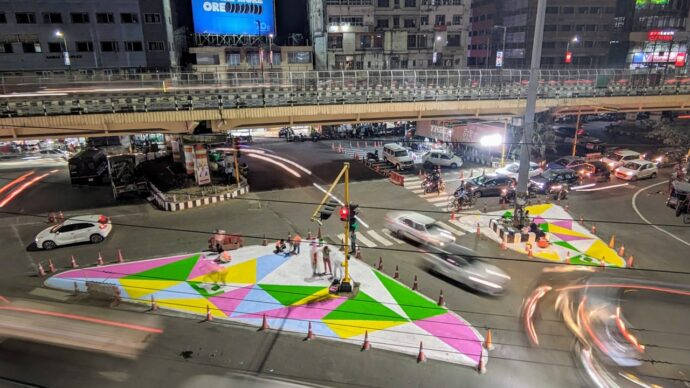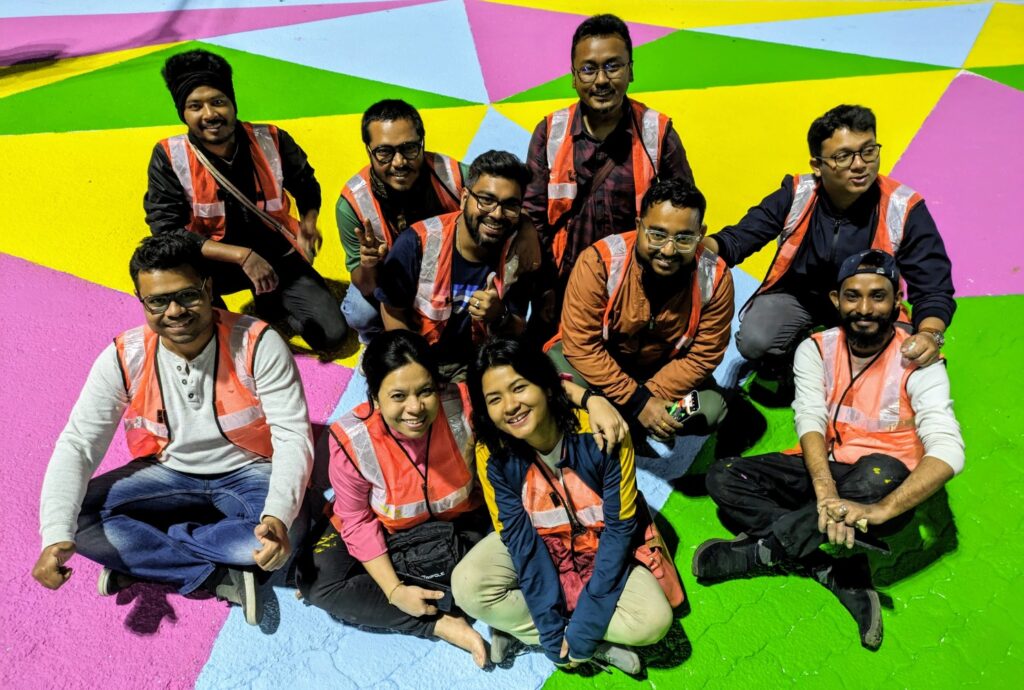assam urban knowledge hub sets new benchmark with tactical urbanism

Guwahati, Assam – In a groundbreaking urban transformation, the Assam Urban Knowledge Hub (AUKH) has successfully implemented its first pilot project at the Ganeshguri Junction—one of Guwahati’s most congested intersections. This initiative, executed in a record time of just two weeks, has set a new precedent for how swift and innovative changes can resolve urban challenges and improve city infrastructure through tactical urbanism.
The pilot project was undertaken under the guidance of Shreya Gadepalli, an urban planning expert & founder & managing trustee of Urban Works Institute invited by Assam’s Urban Affairs Secretary, Ms. Kavitha Padmanabhan. The newly established AUKH was tasked with showcasing its potential as an agent of change through this pilot, and the results have far exceeded expectations.
The journey towards transformation began with an unusual strategy: a guided walk through the city’s streets with key decision-makers. Senior government officials, including the Secretary of Urban Affairs, the District Collector, the Superintendent of Police, and representatives from various departments such as public works, traffic police, and town planning, were taken on a “walk in their city.” This exercise allowed them to experience firsthand the difficulties faced by pedestrians navigating Guwahati’s hazardous footpaths and chaotic intersections.
“It was an eye-opener for all officials involved. They realized how unsafe and inaccessible the city’s infrastructure was, especially for pedestrians who make up the majority of road users,” observed Gadepalli in her post.
Tactical Urbanism is all about action. Also known as DIY Urbanism, Planning-by-Doing, Urban Acupuncture, or Urban Prototyping, this approach refers to a city, organizational, and/or citizen-led approach to neighbourhood building using short-term, low-cost, and scalable interventions to catalyze long-term change.
https://tacticalurbanismguide.com/
Following the walk, the team shifted focus to Ganeshguri Junction, a key intersection that often faced severe traffic congestion despite the presence of a massive flyover overhead. The approach taken by AUKH was to deploy a rapid, low-cost intervention known as tactical urbanism. Using temporary elements such as ropes held by volunteers to form makeshift traffic islands, the team successfully redirected traffic, significantly improving flow and reducing congestion in real-time.

The impact was immediate, as vehicles moved more efficiently through the intersection. Encouraged by the success of this trial, AUKH proceeded to refine the design using chalk lines, traffic cones, and barriers.
An innovative “two-and-a-half-phase” traffic signal plan was also introduced, further optimizing traffic movement and ensuring that pedestrians, including the elderly and differently-abled, could cross the busy road safely.
Within days, the temporary solutions were converted into permanent infrastructure upgrades. Traffic islands and pedestrian crossings were marked with thermoplastic paint, and the newly created spaces were enhanced with bright colours and greenery, turning a previously grey and chaotic junction into a vibrant public space. The redesigned junction not only improved traffic flow but also reclaimed over 10,000 square feet of public space for pedestrian use.
The Ganeshguri Junction project is a shining example of how small yet thoughtful interventions can lead to substantial urban improvements. It’s a testament to what can be achieved through collaboration and creative problem-solving.
Six months on, the pilot’s success has prompted the Assam Government to implement the design permanently, with plans to expand footpaths, reposition bus stops, remove street parking, and introduce more pedestrian-friendly measures at the junction. The project’s success has also emboldened AUKH to take on larger urban challenges across Guwahati and other cities in Assam.
Recognizing his significant contributions, the Assam Government has appointed Shreya Gadepalli as the state’s Urban Mobility Advisor. In this role, she will guide AUKH over the next two years, helping to drive sustainable urban transformation projects and improve city living standards.
The Ganeshguri Junction pilot not only signals the beginning of a new era for urban development in Assam but also serves as an inspiring model for cities across India looking to implement rapid, scalable, and community-driven solutions to urban challenges.
With AUKH at the forefront of this movement, Guwahati is poised to become a beacon of sustainable and inclusive urban development in the region.
This post first appeared as a LinkedIn post by Shreya Gadepalli.
